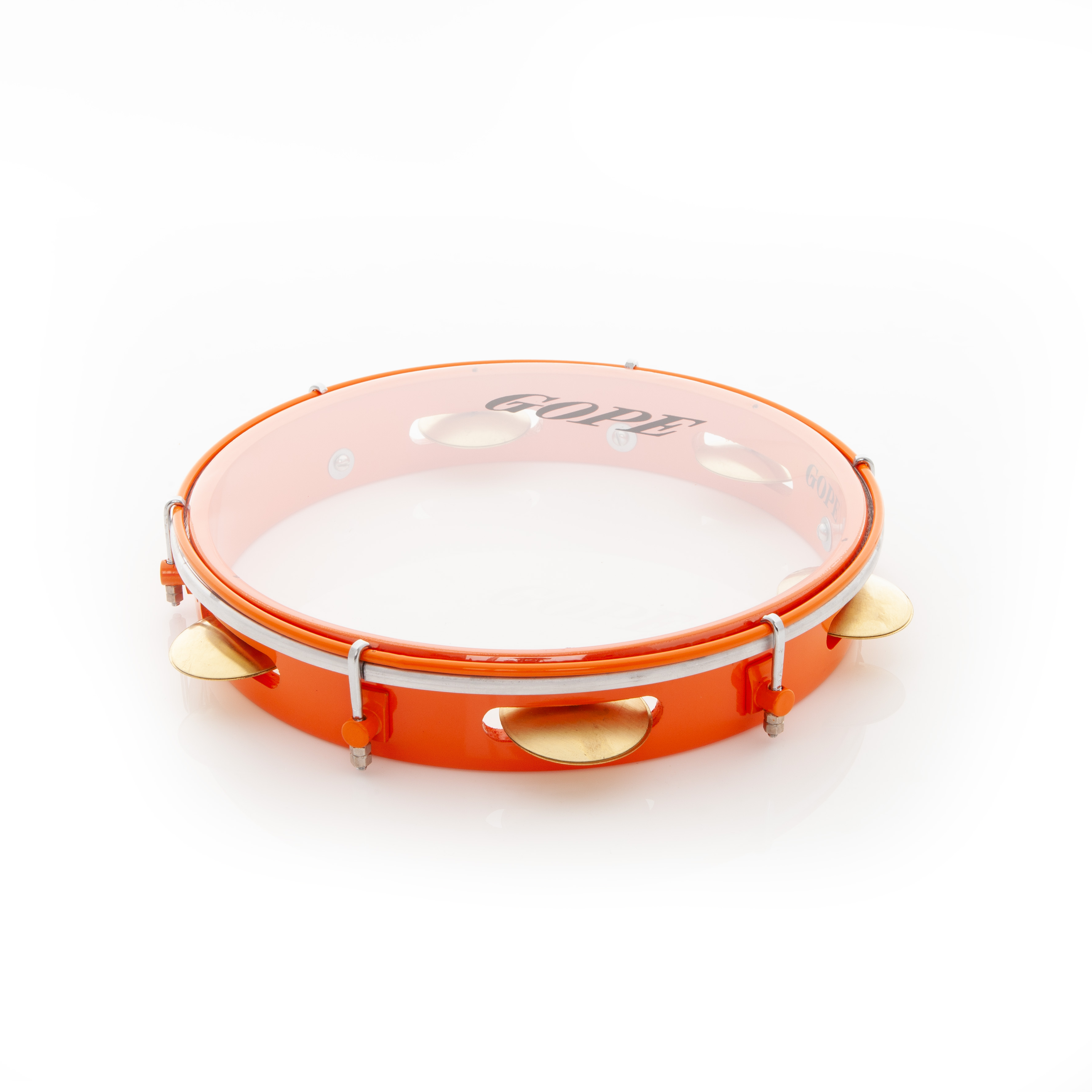Big bells produce deep tones, small ones produce high tones. High tones can be heard better within the context of a whole percussion group, but for some specific styles of music i.e. Ijexà, the deep tones are preferred.So your perception of the right sound is essential for the choice of the right agogô.
The characteristic clicksound produced when pressing together the single bells can only be achieved with a double agogô. Nevertheless, the triple and quadruple-agogôs are also used a lot, since you can play the pretty melodies on them which are typical for various Samba schools.
The most common tuning is the fourth (the interval of a police siren). Not as common but no less beautifull is a third. Most Brazilian-made agogôs are not uniformly tuned, which produces its own, charming and very individual character! The quadruple agogôs from Imperio Serrano are the best proof! Several dissonant bells played together create the authentic and typical Rio style.
The coating of the surface either with chrome or lacquer hardly has any effect on the tuning of the agogô. It´s more a matter of personal optical gusto and environmental consciousness. When making your choice between chrome and lacquer you should notice that chrome plating produces highly hazardous waste which cannot be recycled!
Almost all agogôs you can get are made out of steelsheet, which are commonly coated with lacquer or chrome to protect them against rust. The thickness of the material is crucial for the tone - thin sheets produce a clear and open tone, thicker sheets are more long-living - and durability of the bell.Stainless steel is a high quality material with a therefore higher price. It does not have to be coated, is very durable and cannot rust!

Average rating of 0 out of 5 stars

Average rating of 0 out of 5 stars

Average rating of 0 out of 5 stars

Average rating of 0 out of 5 stars

Average rating of 0 out of 5 stars

Average rating of 0 out of 5 stars

Average rating of 0 out of 5 stars

Average rating of 0 out of 5 stars

Average rating of 0 out of 5 stars

Average rating of 0 out of 5 stars

Average rating of 0 out of 5 stars

Average rating of 0 out of 5 stars

Average rating of 0 out of 5 stars

Average rating of 0 out of 5 stars

Average rating of 0 out of 5 stars

Average rating of 0 out of 5 stars

Average rating of 0 out of 5 stars

Average rating of 0 out of 5 stars

Average rating of 0 out of 5 stars

Average rating of 5 out of 5 stars

Average rating of 0 out of 5 stars

Average rating of 0 out of 5 stars

Average rating of 0 out of 5 stars

Average rating of 0 out of 5 stars










